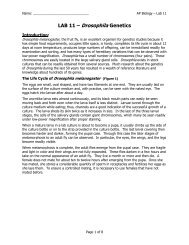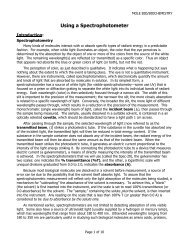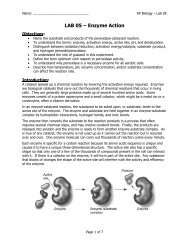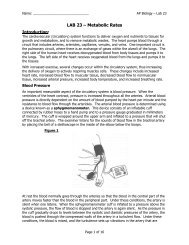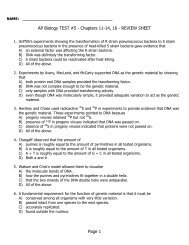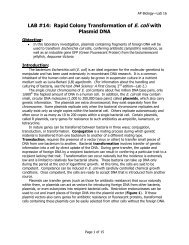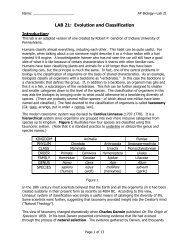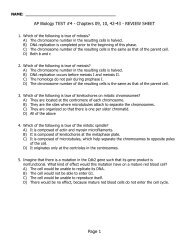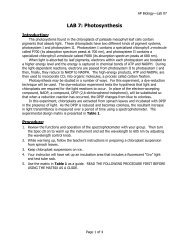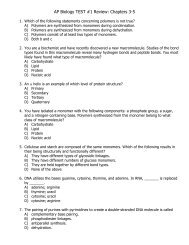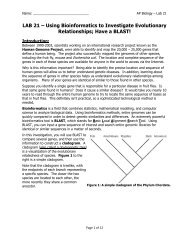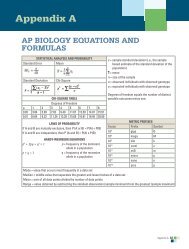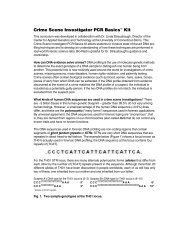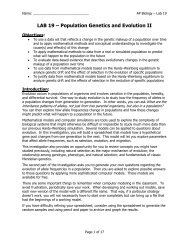AP Lab 24 - Transpiration
AP Lab 24 - Transpiration
AP Lab 24 - Transpiration
You also want an ePaper? Increase the reach of your titles
YUMPU automatically turns print PDFs into web optimized ePapers that Google loves.
The Details<br />
<strong>Transpiration</strong> begins with the evaporation of water through the stomata (stomates), small<br />
openings in the leaf surface which open into air spaces that surround the mesophyll cells of the<br />
leaf. The moist air in these spaces has a higher water potential than the outside air, and water<br />
tends to evaporate from the leaf surface (moving from an area of high water potential to an<br />
area of lower water potential). The moisture in the air spaces is replaced by water from the<br />
adjacent mesophyll cells, lowering their water potential (since the cytoplasm becomes more<br />
concentrated). Water will then move into the mesophyll cells by osmosis from surrounding<br />
cells with high water potentials, including the xylem. As each water molecule moves into a<br />
mesophyll cell, it exerts a pull on the column of water molecules existing in the xylem all the<br />
way from the leaves to the roots. This transpirational pull occurs because of (1) the cohesion<br />
of water molecules to one another due to hydrogen bond formation, and (2) by adhesion of<br />
water molecules to the walls of the xylem cells which aids in offsetting the downward pull of<br />
gravity.<br />
The upward transpirational pull on the fluid in the xylem causes a tension (negative pressure)<br />
to form in the xylem, pulling the walls of the xylem inward. The tension also contributes to the<br />
lowering of water potential in the xylem. This decrease in water potential, transmitted all the<br />
way from the leaf to the roots, causes water to move inward from the soil, across the cortex of<br />
the root, and into the xylem.<br />
Plants lose as much as 90% of the water that enters the roots by the process of transpiration.<br />
Evaporation through the open stomates is clearly a major route of water loss in plants.<br />
However, the stomates must open to allow the entry of CO 2 used in photosynthesis. Therefore,<br />
a balance must be maintained between the gain of CO 2 and the loss of water by regulating the<br />
opening and closing of the stomata on the leaf surface. Many environmental conditions<br />
influence the opening and closing of stomates and also affect the rate of transpiration.<br />
Temperature, light intensity, air currents, and humidity are some of these factors. Different<br />
plants also vary in the rate of transpiration and in the regulation of stomatal opening. In this<br />
lab, you will measure transpiration under various laboratory conditions using a potometer.<br />
Page 2 of 7




